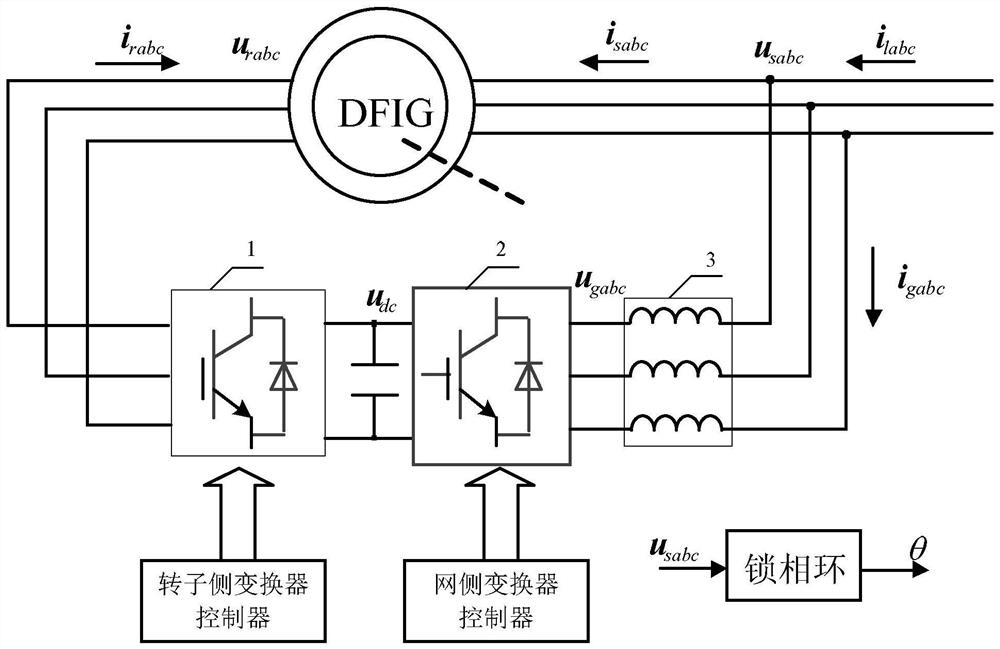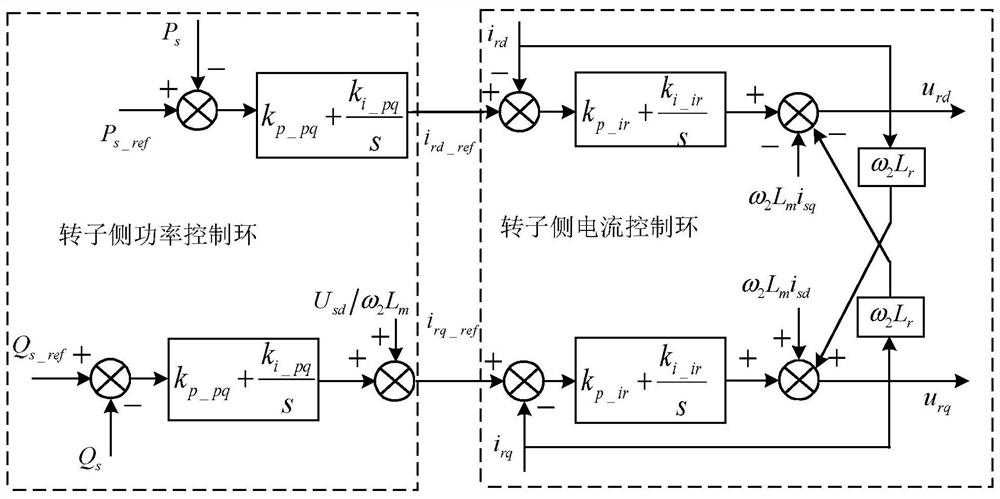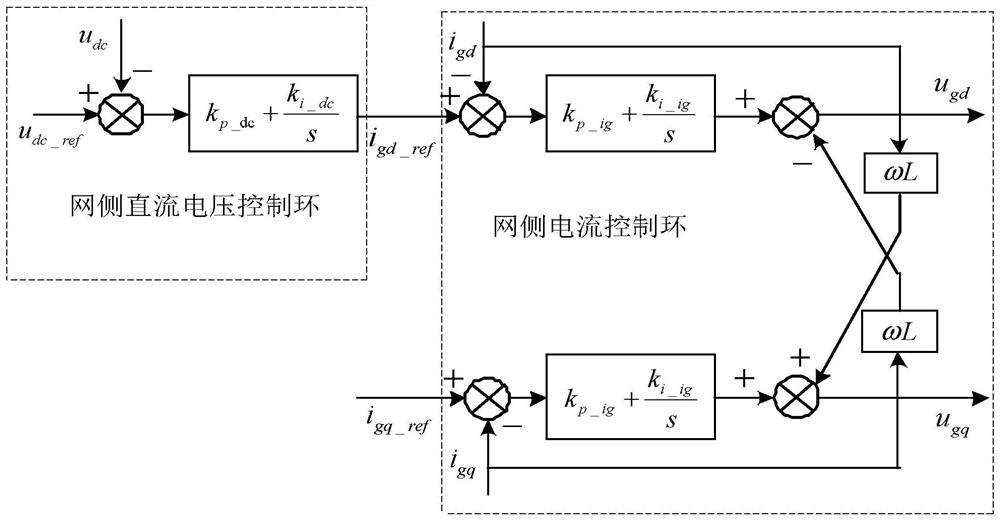Subsynchronous resonance suppression method for doubly-fed wind turbine based on converter cooperative damping control
A doubly-fed wind turbine, sub-synchronous resonance technology, applied in the direction of circuit devices, AC network circuits, reducing/preventing power oscillation, etc., can solve problems such as low equipment utilization and control signal acquisition errors
- Summary
- Abstract
- Description
- Claims
- Application Information
AI Technical Summary
Problems solved by technology
Method used
Image
Examples
specific Embodiment approach 1
[0025] Embodiment 1: The subsynchronous resonance suppression method for doubly-fed wind turbines based on converter cooperative damping control described in this embodiment includes the following steps:
[0026] Step 1: Collect the stator current signal i through the stator current sensor of the stator winding of the doubly-fed generator s_abc , the grid-side converter current i is collected by the grid-side converter current sensor g_abc .
[0027] Step 2: The stator current signal i s_abc and grid-side converter current i g_abc The stator current signal i in the synchronous rotating system is obtained through Clark transformation and Park transformation in turn s_dq and grid-side converter current i g_dq .
[0028] Step 3: Use a second-order high-pass filter to eliminate i s_dq and i g_dq Influence of the DC component, the d, q axis disturbance components of the stator current and the d, q axis disturbance components of the grid-side converter are extracted respectiv...
PUM
 Login to View More
Login to View More Abstract
Description
Claims
Application Information
 Login to View More
Login to View More - Generate Ideas
- Intellectual Property
- Life Sciences
- Materials
- Tech Scout
- Unparalleled Data Quality
- Higher Quality Content
- 60% Fewer Hallucinations
Browse by: Latest US Patents, China's latest patents, Technical Efficacy Thesaurus, Application Domain, Technology Topic, Popular Technical Reports.
© 2025 PatSnap. All rights reserved.Legal|Privacy policy|Modern Slavery Act Transparency Statement|Sitemap|About US| Contact US: help@patsnap.com



